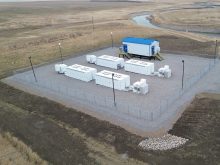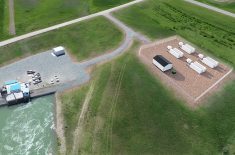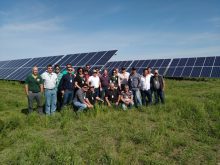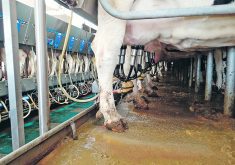Interested parties will be able to attend in-person meetings or make written submissions as part of the review
The Alberta Utilities Commission is announcing details of its public engagement schedule that will form part of an inquiry into renewable power development in the province.
The AUC will divide its renewables inquiry into two sections with the initial part examining land impact issues of the energy resource development as well as the role of municipal governments in the process.
Three in-person engagement sessions will be held in Red Deer, Medicine Hat and Pincher Creek from Nov. 2-8, while the AUC will also collect written submissions from the public wishing to express their opinion. The deadline for those submissions is Nov. 22.
Read Also

Feds propose overhaul of chronic wasting disease control program
Chronic Wasting disease control program getting updated by Canadian Food Inspection Agency with feedback encouraged from producers.
The inquiry follows a provincial moratorium that was placed on approvals for new renewable energy development until at least the end of February 2024.
The initial part of the inquiry will examine impacts on renewable energy development on agricultural and environmental land, its development on crown land, reclamation processes and how it will affect “Alberta’s pristine viewscapes.”
For Mark Mallett, who has launched the Wind Concerns website along with other residents in response to a wind project near Elk Point, Alta., and generally opposes wind development in the province, it’s the last point that he says may be underappreciated.
“Nobody is talking about the natural resource of beauty,” said Mallett, editor of Wind Concerns.
But that’s far from his only concern over what he calls “wind factories.”
Illnesses reported by those who live near wind turbines, impacts to ground water and their ability to kill scores of migratory birds are just some of the other issues related to renewable energy development.
“It’s an incredible assault on people and animals,” said Mallett. “We’ve come to the conclusion — based on the studies, based on the information that we have from all over the world — that wind factories are an absolute disaster from an economic, environmental, human and animal health standpoint.”
Many of Mallett’s claims have been presented during AUC development hearings on individual renewable energy projects over the past decade and have largely been rejected by the regulatory agency.
Mallett said that’s due to the regulatory process being biased in favour of large industrial interests and the flawed studies that they support.
“It’s not set up for the average citizen,” he said.
“You’ve got farmers and local people who are suddenly going to have to mount legal arguments and hiring expensive law firms to do this. It’s time consuming.”
The AUC regulatory process requires developers to pay for costs associated with those opposed to specific renewable energy projects if they are considered to be directly impacted by a development and given standing at the hearing stage.
However, Mallett said those affected might be beyond the scope that AUC recognizes.
“This is an experiment. There is no question we are going to be guinea pigs,” he said, noting the increasing size of wind turbines.
In addition to the in-person public engagement sessions and written submissions that will form the first part of the AUC inquiry, the regulatory body has reserved two four-day virtual sessions in December to pose questions to interested parties or hear oral submissions from others wishing to participate.
The second part of the inquiry will examine the impact of the increasing growth of renewables on generation supply and electricity system reliability.
In-person sessions will be held from 3 to 8 p.m. in Red Deer, Medicine Hat and Pincher Creek on Nov. 2, 7 and 8, respectively.
















